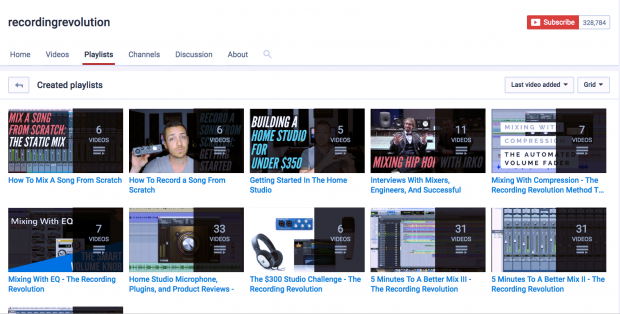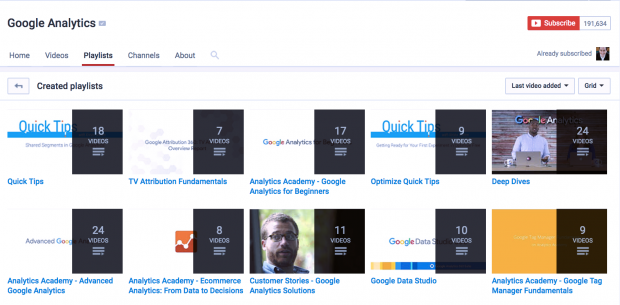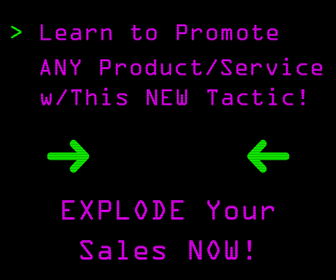Getting people to watch your Youtube videos can feel like an uphill battle.
The first step, of course, is to have videos worth watching, but promotion is the hard part.
If you've got great content, you need to get more eyes on it any way you can.
On Youtube, the goal is to build a following of subscribers.
Whether you're using video for content marketing, or you're an aspiring Youtube personality with a channel you're trying to monetize, subscriber count is generally a pretty useful metric to gauge interest in your videos.
Ideally, subscribers will return to your channel, since they get notified about new video uploads.
But how do you build a large following on Youtube?
In a recent post from Hootsuite, the author offers a few smart tips for getting new followers quickly and efficiently.
It's important to remember that the value of your followers is more important than the number alone.
100,000 people who never engage with you, and who seldom watch your videos, don't convert or generate ad revenue.
It's better to have 500 fans who actually care.
Here are a few tactics you can use to get more eyes on your Youtube videos.
Follow the 1×4 content schedule
I wanted to know how to build a YouTube following from scratch, so I interviewed Graham Cochrane, the founder of the popular YouTube channel “The Recording Revolution.” Cochrane went from unemployed to creating a 7-figure business around audio engineering tips. YouTube has been a key distribution channel for him.
Cochrane says publishing frequency is key.
“The BEST thing you can do with YouTube (or any content creation for that matter) is to make a lot of content and make it consistently. I’ve made at least one video a week for seven years.”
This frequency helps you retain subscribers (another important metric for YouTube) as well as helps you attract new free YouTube subscribers.
“People come to expect your content. You create a dependable rhythm like your favorite TV show. You know it comes on every week. Plus, when you create more content you increase the number of places people find you online. Instead of seeing your brand for one or two YouTube searches, you start to appear again and again in search results.”
A simple formula that works is this: 1×4. Publish four YouTube videos every month. That breaks down to one video every week. It’s an easy number to remember and you’ll soon see new YouTube subscribers trickling in.
Your Task: Commit to a publishing schedule. An easy formula: one YouTube video every week for a total of four a month.
Convert searchers to subscribers with playlists
You work hard to acquire a first-time viewer. The viewer needs to search for a relevant keyword, see your video in YouTube’s results, and click your result. To turn these casual viewers into subscribers, use YouTube playlists. These boost content consumption, retain subscribers, and boost your watch time.
Instead of creating miscellaneous playlists, create a track of content for new users to watch. In other words, treat your viewers as a cohort, segmenting your audience into groups of users that will move through your content.
Create playlists for three types of cohorts:
- New viewers—what content should a new viewer watch first? I recommend creating a YouTube playlist that says. “New to this YouTube channel? Watch these first.” This playlist needs to introduce the viewer to your channel and deliver your best, funniest, or most helpful videos that will convert them from a searcher to a subscriber.
- Task-orientated viewers—If you offer educational content, a large portion of your audience will be looking to solve specific problems. This might be learning a specific skill or fixing a problem. Cochrane (the YouTube expert quoted above), for example, has specific playlists that help his audience complete different music tasks. These playlists increase content consumption as well as remind people that your channel is a good place to look later if they encounter a challenge. You can see Cochrane’s playlists below or by clicking here.
[image source: Hootsuite]
- Topic-focused viewers—By creating playlists that comprehensively cover a specific topic, you’ll attract one of the most profitable type of viewers: content bingers. These viewers are looking for collections of videos on a specific topic and will methodologically work their way through your playlists. A good example of this comes from Google Analytics’ YouTube channel. You can watch a collection of videos on “TV attribution,” “Google Data Studio,” or master the basics of “Google Tag Manager.”
[image source: Hootsuite]
It’s easy to create a playlist in YouTube.
- Start with a video you want in the playlist
- Under the video, click add to
- Click create new playlist
- Enter a playlist name
- Use the drop down box to select your playlist’s privacy setting. If it’s private, people can’t find it when they search YouTube
- Click create
Your Task: Create YouTube playlists based on three viewer cohorts: first-time viewers; task-orientated viewers; and topic-focused viewers.
Promote with Subreddits
Reddit users organize themselves into subreddits. These are communities based around a topic. Find 10 to 20 subreddits and tell people about your YouTube channel.
If your content is horrible and not relevant to the subreddit, Redditors will make fun of you and kick you out of the subreddit.
A good rule of thumb for marketing, though, is to only promote and advertise once you have an amazing product. Otherwise, as marketing legend Dan Kennedy puts it, “marketing only increases the speed people find out your product is awful.”
Your Task: Find 10 to 20 subreddits and post a link to a YouTube video you’re proud of. I wrote a comprehensive guide to finding subreddits here.
Create searchable titles
I also asked Cochrane if he had any simple optimization techniques that people tend to overlook. He recommended spending a few minutes creating SEO-focused titles and descriptions.
“The best thing you could do is create YouTube titles and descriptions that have the most relevant search terms in them,” says Cochrane.
“An easy way to test is to start typing into the YouTube search bar the words you WERE going to use in your title. Which search results come up? Now try other words (one word at a time because YouTube will autofill based on popular search terms) and you can see what other people are ACTUALLY typing into YouTube and see how many results those search terms give you.”
Your Task: Use YouTube’s autofill feature to create SEO-friendly titles and descriptions.
You can find more tips for building a Youtube following over at Hootsuite.
CHALLENGE Yourself to Profit!
Free Download: Build Your Profit-Generating Online Business With This Free Blueprint
Sign Up, follow the easy steps and You'll get the tactics, strategies & techniques needed to create your online profit stream. It's free!
Free Download:
“Download The 21 Days To Profit Blueprint 100% FREE… and Discover The Single Most Profitable Niche Market Selection Technique”All new plug and play blueprint builds
profitable Internet businesses in record time… | |
|





